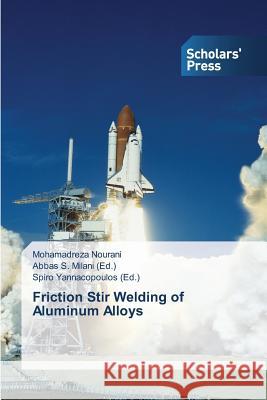Friction Stir Welding of Aluminum Alloys » książka
Friction Stir Welding of Aluminum Alloys
ISBN-13: 9783639707731 / Angielski / Miękka / 2014 / 232 str.
The main objective of this book is a novel integrated multiphysics modeling, testing, and optimization of friction stir welding (FSW) for aluminum alloys, and thereby facilitating a better understating of processing-microstructure-properties relationships in this relatively new welding technique. To this end, first we review various models and optimization methods used in the field of FSW. Next, based on a validated thermal model for aluminum 6061 we explain determining parameters in the resulting mechanical properties of FSW welds. Then, we develop and validate a novel two-dimensional Eulerian steady-state "integrated multiphysics" model of FSW of aluminum 6061 which did not exist earlier in the literature and can simultaneously predict temperature, shear strain rate, shear stress and strain fields over the entire workpiece. The model can additionally predict the microstructural changes during and after FSW as well as the residual stresses. Finally, we perform a comprehensive experimental study on FSW of aluminum 6061 samples in order to further validate the developed numerical model and optimize the welding process parameters.
The main objective of this book is a novel integrated multiphysics modeling, testing, and optimization of friction stir welding (FSW) for aluminum alloys, and thereby facilitating a better understating of processing-microstructure-properties relationships in this relatively new welding technique. To this end, first we review various models and optimization methods used in the field of FSW. Next, based on a validated thermal model for aluminum 6061 we explain determining parameters in the resulting mechanical properties of FSW welds. Then, we develop and validate a novel two-dimensional Eulerian steady-state "integrated multiphysics" model of FSW of aluminum 6061 which did not exist earlier in the literature and can simultaneously predict temperature, shear strain rate, shear stress and strain fields over the entire workpiece. The model can additionally predict the microstructural changes during and after FSW as well as the residual stresses. Finally, we perform a comprehensive experimental study on FSW of aluminum 6061 samples in order to further validate the developed numerical model and optimize the welding process parameters.











